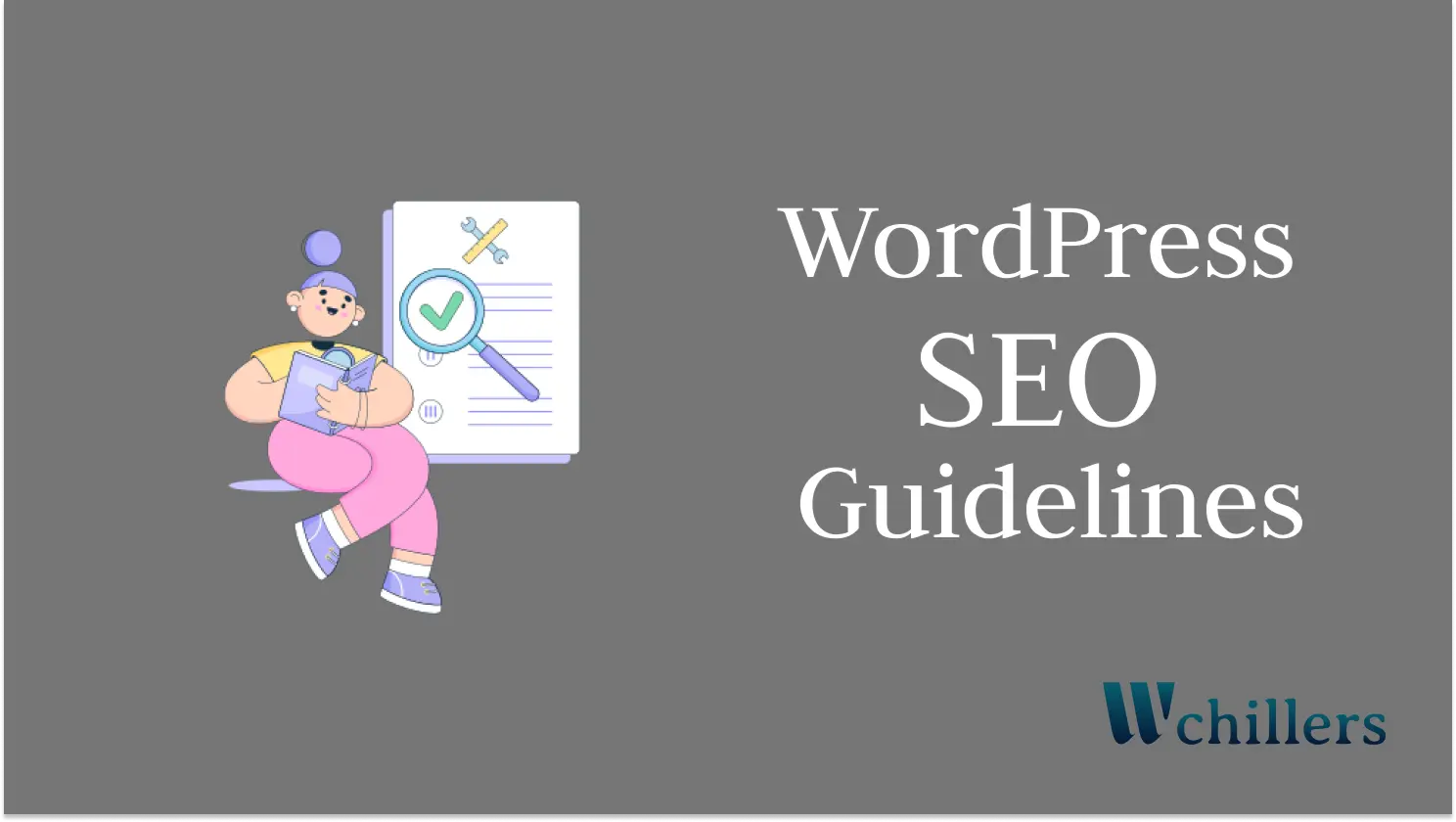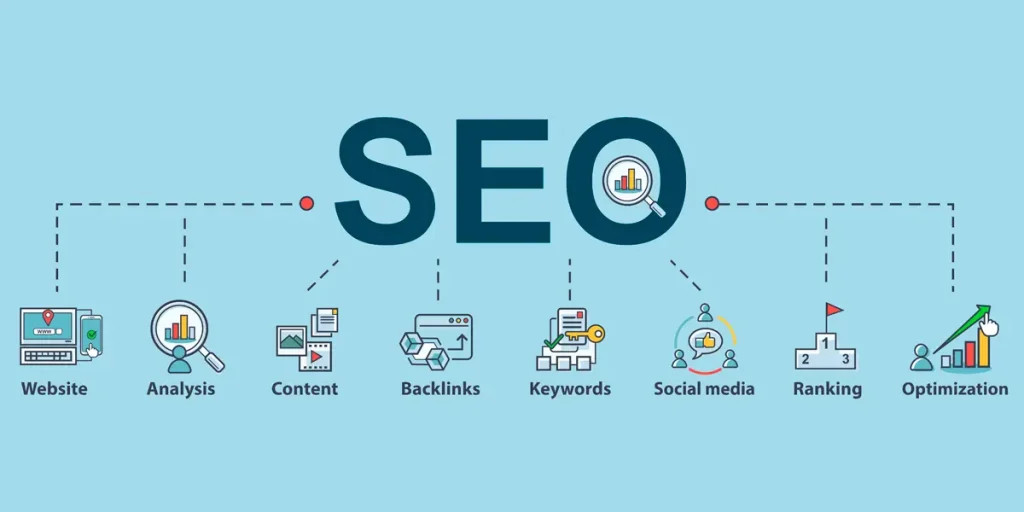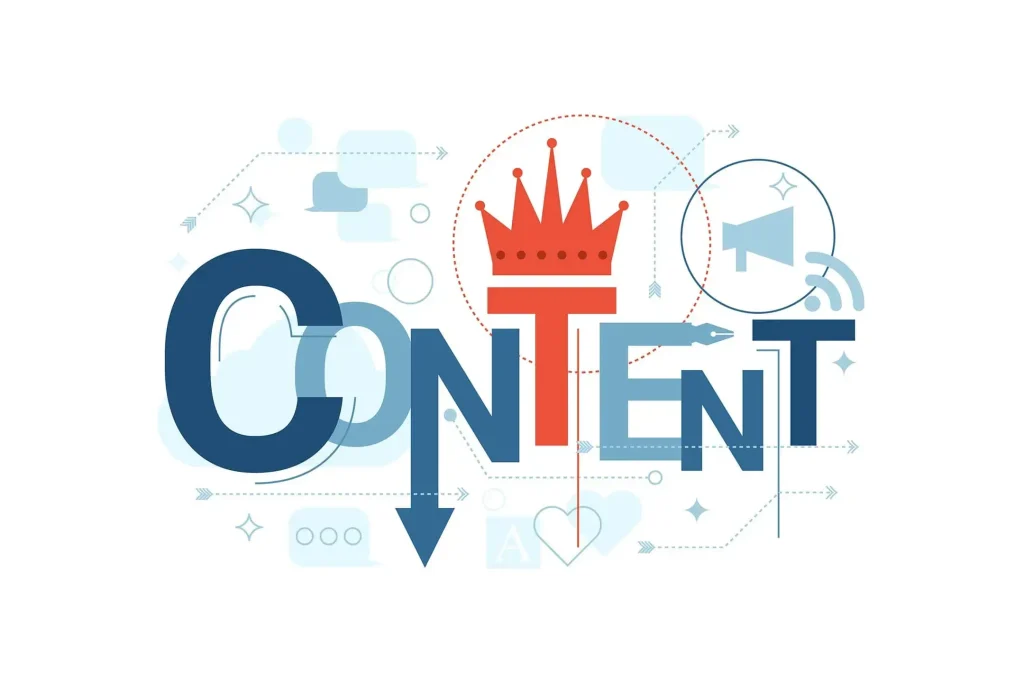WordPress SEO Best Practices 2025

WordPress SEO is more trendy nowadays because WordPress is the most popular CMS(Content Management System). It is easier to build websites with it and it is SEO friendly. Website SEO strategy helps a website rank better in search engines. Search engines employ crawler bots to find which site is about what and how it is. WordPress site SEO makes sure those bots tell about websites and makes it suitable for audiences to have better experiences.
Table of Contents
SEO for WordPress Websites
WordPress site SEO(Search Engine Optimization) refers to techniques that help to ensure that a website ranks higher in the results of search engine result pages. It helps to bring more organic traffic. It involves optimizing various aspects of your WordPress site to improve its visibility in search engine results, thereby driving organic traffic.
Plan for proper website SEO strategy
It is important to make a proper plan for WordPress SEO, which means making a plan to develop, optimize, and promote content to improve its visibility in search engine results. It helps to attract more organic traffic to a website. It is a set of actions that involves variety of actions like keyword research, on-page optimization, off-page optimization, content, technical SEO, link building, etc. The steps of making plan for proper website SEO strategy are as follows:
- Conduct an SEO Audit
- Set Clear Goals
- Keyword Research
- Competitive Analysis
- On-Page SEO Optimization
- Technical SEO Improvements
- Content Strategy
- Link Building Strategy
- Local SEO (if applicable)
- Social Media Integration
- Monitor and Analyze Performance
- Continuous Improvement

Choosing the Right SEO Plugin for WordPress
WordPress SEO plugins take the difficulty out of site optimization. That is why, it is an important step. There are many WordPress SEO plugins for WordPress sites along with different features and benefits. To install a plugin, you should consider its cost, notable features, user-friendliness, etc. Yoast SEO, Rank Math, Squirrly SEO, All In One SEO, etc. are the most popular SEO plugins for WordPress sites.
Optimizing Permalink Structure for SEO
Permalink is the short form of the permanent link which serves as the web address of a page. Permalink Structure for SEO should be simple and easy to understand. Only hyphens should be used to differentiate words. Every page will have an individual and unique permalink and it should specify the page correctly. It should contain your targeted keyword. SEO-friendly permalink should be short, memorable, and shareable. Including dates or years is a common mistake for an SEO-friendly permalink.
Crafting High-Quality Content for Better Rankings
Crafting high-quality content refers to creating and structuring content in a way that helps it rank higher in search engine results. It is essential for improving your site’s search engine rankings and attracting a loyal audience. High-quality content is relevant, informative, and engaging, providing real value to readers. It starts by conducting keyword research to create comprehensive content that addresses their needs and queries. Ensuring content is well-structured with clear headings, subheadings, and bullet points, making it easy to read and navigate. Incorporate multimedia elements such as images, videos, and infographics to enhance the user experience and keep readers engaged.

Quality content is the backbone of any successful website SEO strategy.
By prioritizing quality over quantity and continuously refining your content strategy based on performance data and feedback, you can create content that not only ranks well in search engines but also resonates with your audience, building trust and authority in your niche.
Utilizing Meta Tags Effectively
Utilizing meta tags effectively is a fundamental aspect of website SEO strategy that can significantly enhance your website’s visibility and click-through rates. Meta tags are short forms of code that tell search engines important information about your web page, such as how they should display it in search results.
The title tag is one of the most critical on-page SEO elements. Keep it between 50-60 characters, include your primary keyword, and make it compelling to attract clicks. Ensure each page has a unique title tag that accurately reflects its content.
Meta descriptions offer a brief summary of the page content and appear below the title tag in search results. Write a unique description for each page and try to summarize the content of the page accurately. Also, keep it under 160 characters and try to include relevant keywords effectively.
Structuring Content with Heading Tags
Structuring content with heading tags is essential for organizing content. Heading tags make content more readable and scannable for users, who can quickly find the information they need or skip the parts they don’t. Visitors use headings to quickly scan a page and to determine whether it looks relevant. Search engines use headings to understand a page’s structure and what it’s about. There are six types of heading tags, from H1 to H6. One should use only one H1 tag for the title or headline.
Enhancing Image SEO
Correctly used images help readers understand the article, the product, or the service. Enhancing image SEO involves optimizing various elements of images to improve their visibility in search engine results. To enhance image SEO:
- Use Descriptive File Names- Rename image files with descriptive, keyword-rich names. This helps search engines understand the content of the image.
- Optimize Alt Text- Alt text (alternative text) describes the image for those who can’t see it, including search engines and users with visual impairments.
- Use Captions and Surrounding Text- Captions are displayed below images and are often read more than the body text. Surrounding text helps search engines understand the context of the image.
- Implement Structured Data
- Create an Image Sitemap
- Ensure Mobile-Friendliness
- Leverage Lazy Loading
Leveraging Internal Linking Strategies
Internal links play a vital role in optimizing websites for search engines. Internal linking is a crucial aspect of website SEO strategy that helps improve website navigation, distribute page authority, and enhance user experience.
To leverage internal linking, first, you should create a Logical Site Structure. Anchor text should be descriptive. The link should be relevant to the content. Implement breadcrumbs as Breadcrumbs provide a trail for users to follow back to the starting or previous page, improving navigation and SEO. Instead of linking only to the homepage or top-level pages, link to deep pages within your site. Regularly update old content with links to new pages and articles. Replace broken links promptly. Keeping links relevant and functional ensures a positive user experience and sustained SEO benefits.
Internal linking helps users easily navigate through your website. It works by providing relevant links to related content. This improves user experience, encourages longer site visits, and decreases bounce rates. Internal links serve as pathways for search engine spiders to discover and index your web pages.
Optimizing for Mobile Devices
As mobile phones have become as essential to modern humans, making a site mobile-friendly is essential. Orienting digital content for mobile devices is mobile optimization so that mobile users can view and operate site content flawlessly. To optimize for mobile devices:
- Proper web design compatible with mobile screens.
- Using size percentages for layout elements
- Using mobile-friendly navigation.
- Performance optimization as Performance is critical for mobile users who might be on slower networks.
- Every button on the screen should be easy for mobile customers to use.
- Regularly test and debug your site on multiple devices and browsers.
- Less use of long paragraphs in order to keep traffic for a longer time.
Speed Optimization Techniques
Speed optimization is a set of techniques to make a site as fast as possible. It is crucial for enhancing user experience, reducing bounce rates, and improving search engine rankings. Some speed optimization techniques are:
- Reducing the number of HTTP requests.
- Optimizing images.
- Enable browser caching to store some resources in the user’s browser.
- Remove unnecessary characters from your code without changing its functionality.
- Load scripts asynchronously to prevent them from blocking the rendering of the page.
- Distribute your content globally to reduce load times.
- Improve your server’s response time to enhance performance.
- Compress files to reduce their size for faster loading.
- Reduce the number of different font weights and styles used.
- Implement lazy loading for scripts that aren’t immediately needed.
Creating and Submitting XML Sitemaps
An XML sitemap is a file that lists the URLs for a website along with additional metadata about each URL. This file helps search engines like Google, Bing, and others to crawl and index the website more effectively. Creating and submitting XML sitemaps is an important step in ensuring that search engines can effectively crawl and index your website.
There are various ways possible that can automatically generate an XML sitemap for you, such as online tools like XML-Sitemaps.com, and Slickplan; plugins like Yoast SEO, Google XML Sitemaps; and many CMS built-in features. If you prefer to create an XML sitemap manually, follow these steps [code]
XML sitemaps help enhance bot crawling and indexing. A well-structured sitemap can potentially increase your website’s visibility in search results by making it easier for search engines to discover and index your content. It helps to make faster content updates.
Implementing HTTPS for Site Security and WordPress site SEO
HTTPS(Hypertext Transfer Protocol Secure) is the modern, secure version of HTTP. Implementing HTTPS for your website is crucial for enhancing security and improving WordPress site SEO. HTTPS encrypts data exchanged between the user’s browser and the server, ensuring the privacy and integrity of the data. Steps to Implement HTTPS are:
- Purchase an SSL/TLS Certificate.
- Install the Certificate on Your Server.
- Redirect HTTP to HTTPS
- Update Internal Links
- Update External Links and Resources.
- Update your Sitemap and Google Search Console.
Monitoring Performance and Analyzing Data
Monitoring performance and analyzing data for your website are crucial steps to ensure optimal functionality, user satisfaction, and business growth. Key Performance Metrics to Monitor are load time, time to first byte, bounce rate, average session duration, pages per session, error rate, etc.
Tools for Monitoring Performance:
- Google Analytics: Monitor metrics like bounce rate, average session duration, and pages per session to understand user engagement.
- Google Search Console: Track keywords, impressions, and click-through rates, and fix crawl errors.
- Google PageSpeed Insights: Analyze the performance of your website on both mobile and desktop devices.
- GTmetrix: Comprehensive analysis of website speed and performance.
- Pingdom: Monitor website uptime, performance, and user interactions.
- WebPageTest: Run performance tests from multiple locations worldwide.
- New Relic: Monitor application performance and server health.
- Datadog: Full-stack observability for web applications.
Keeping WordPress Core, Themes, and Plugins Updated
Keeping your WordPress core, themes, and plugins updated is essential for maintaining the security, performance, and functionality of your website. Updates come with new features, fixed bugs, and security. Keeping everything updated reduces the risk of your site being hacked. Optimized code can enhance the speed and efficiency of your site. Enhance the functionality and user experience of your site. Best Practices for Updates are:
- Test Updates
- Check Compatibility
- Regular Maintenance
- Use Reliable Sources
- Enable Maintenance Mode
- Monitor Your Site
Driving Organic Traffic with WordPress SEO
Driving organic traffic through your WordPress site SEO involves a combination of on-page optimization, technical SEO, content creation, and link building. It is the main purpose of SEO(Search Engine Optimization). Proper implementation of SEO techniques is the root cause of site ranking, driving more organic traffic and having more session periods which will serve the purpose of the site.
FAQ

Q. Why is website SEO strategy important for my WordPress site?
Answer: Website SEO strategy helps improve your website’s visibility on search engines, leading to increased organic traffic, better user engagement, and higher conversion rates.
Q. What are the key on-page SEO elements I should focus on?
Answer: You should focus on title tags, Meta descriptions, Header tags, Alt text for images, Internal linking, etc.
Q. How can I improve my site’s loading speed?
Answer: You should look after caching plugins, Image optimizations, Minify code, and Content delivery network to improve your site’s loading speed.
Q. What is mobile optimization and why is it important?
Answer: Mobile optimization ensures your site functions well on mobile devices. It is important to have a proper experience of the site from a mobile device.
Q. What is the best way to handle internal linking?
Answer: The best way to handle internal linking is to have strategic placements and having descriptive anchor text.
Q. What are common SEO mistakes to avoid?
Answer: Common WordPress SEO mistakes are keyword stuffing, ignoring mobile optimization, neglecting backlinks, slow loading speed, duplicate content, etc. These mistakes should be avoided to have better SEO results.
Wrapping Up
WordPress site SEO is essential for any website aiming to increase organic traffic and improve online visibility. The evolving landscape of SEO requires a strategic approach encompassing on-page optimization, technical SEO, content creation, and link building. By implementing these guidelines, you ensure that your WordPress site remains secure, user-friendly, and aligned with search engine algorithms.